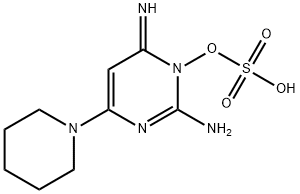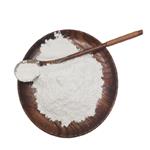Minoxidil sulfate was the drug approved by the FDA for the treatment of androgenetic alopecia (hair loss). Its effectiveness has largely been demonstrated in younger men (18 to 41 years of age), the younger the better, and in those with balding in the central (vertex) portion of the scalp. The water solubility characteristics of minoxidil sulfate increases the absorption.
Before that, minoxidil sulfate had been used as vasodilator drug prescribed as an oral tablet to treat high blood pressure and it’s can used for refractory hypertension and renal hypertension. Minoxidil sulfate has been used to better understand the blood-brain tumor barrier in syngeneic and allogeneic rat studies and has demonstrated to increase tumor permeability.
Minoxidil sulfate (MXS) has been used as a drug agent to study its effects on alopecia in corticotropin-releasing factor over-expressing (CRF-OE) mice. It has also been used as a positive control in an assay for the culturing of rat vibrissa follicles.
specifically opens ATP-sensitive K channels, strong vascular smooth muscle relaxer, active minoxidil metabolite
A selective ATP-sensitive potassium channel opener. It is the active metabolite of minoxidil and is a potent (IC50=0.14) vascular smooth muscle relaxant
Minoxidil sulfate is the active metabolite of Minoxidil and is a potent (IC50=0.14M) vascular smooth muscle relaxant. Minoxidil sulfate is a selective ATP-sensitive potassium channel opener.
Minoxidil sulfate (MXS) is an endogenous derivative of minoxidil. It possesses greater aqueous solubility and is a potent vasodilator. MXS has the potential to treat androgenic alopecia or male baldness.
Minoxidil sulfate (1-100 μM; 2 hours) significantly reduces the permeability of bloode-brain tumor barrier (BTB) in a monolayer of RBMEC in a time-dependent manner, additionally,the effects of MS on transendothelial electrical resistance (TEER) is Transendothelial electrical resistance (TEER) at 2 h with high concentration.Minoxidil sulfate (0-100 μM; 0-4 hours) increases the RhoA activation in brain tumor tissue by 1 h and the highest level appears at 2 h, it also significantly induces transient PKB phosphorylation at Ser-473, without affecting total PKB levels. Addiotionally, LY294002 partly prevents the phosphorylation of PKB induced by MS.



